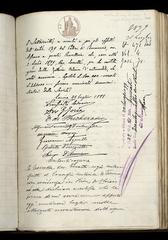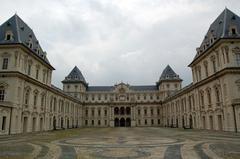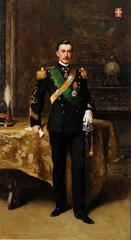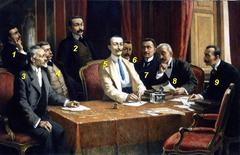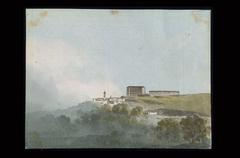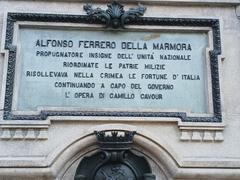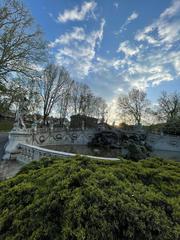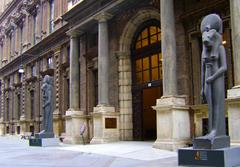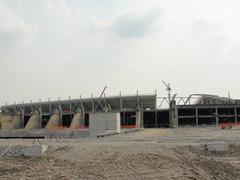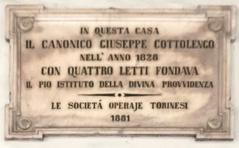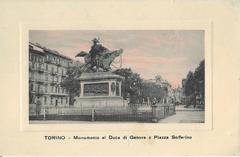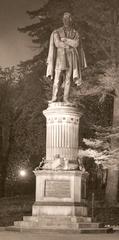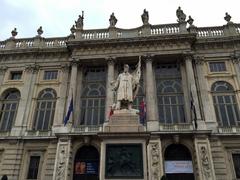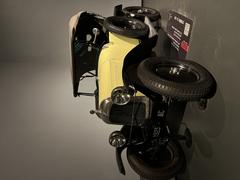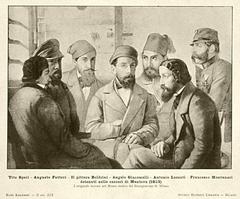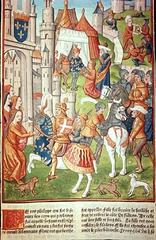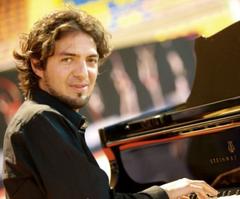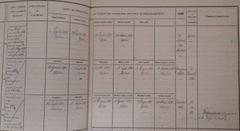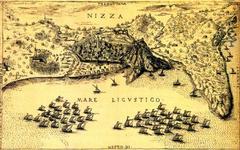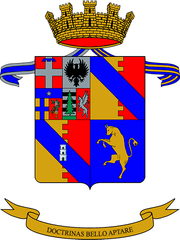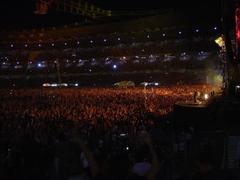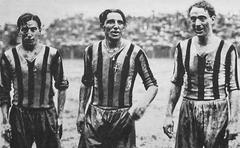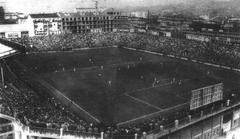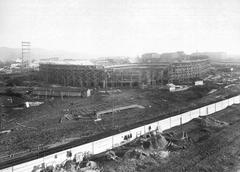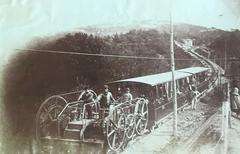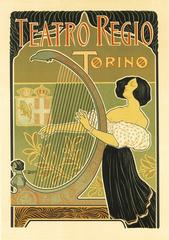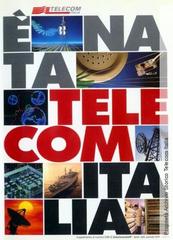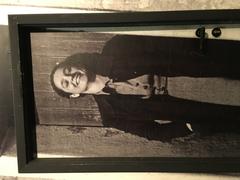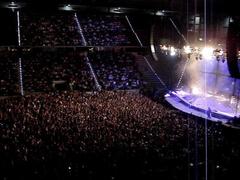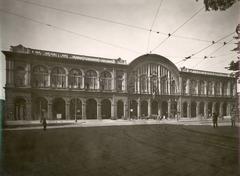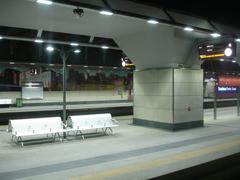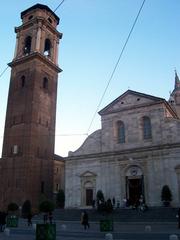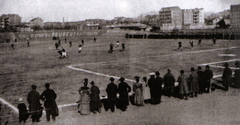San Filippo Neri Turin, Italy: Visiting Hours, Tickets, and Historical Sites Guide
Date: 04/07/2025
Introduction: The Legacy of San Filippo Neri in Turin
San Filippo Neri Church, situated in the heart of Turin, is a monumental testament to Baroque and Neoclassical architecture. Commissioned in the 17th century under the patronage of the House of Savoy, its storied construction—marked by setbacks and visionary redesigns—reflects the city’s religious, artistic, and civic evolution. The church’s luminous, expansive nave, designed by Filippo Juvarra, remains one of the most impressive sacred interiors in Turin. Today, San Filippo Neri is not only an architectural marvel but also a vibrant repository of art, music, and community life, making it an essential destination for visitors interested in Turin’s cultural heritage (Wikipedia IT; Spotting History; Renato Prosciutto; The Imaginative Conservative).
Table of Contents
- Introduction
- Early Foundations and Patronage
- Architectural Evolution and Artistic Significance
- The Crypt, Restoration, and Community Traditions
- Visiting Information: Hours, Tickets, and Tips
- Nearby Attractions
- Visuals and Media Suggestions
- Frequently Asked Questions (FAQ)
- Comprehensive Visitor Guide: Architecture, Art, and Accessibility
- The Oratory of San Filippo Neri: Music, Culture, and Community
- Location, Directions, and Contact Information
- Summary and Call to Action
- References
Early Foundations and Patronage
The congregation of the Oratory of Saint Philip Neri arrived in Turin in 1648, initially occupying several temporary sites. In 1675, Charles Emmanuel II, Duke of Savoy, granted the Oratorians a prominent plot in the city center, paving the way for the construction of a new church. Maria Giovanna Battista of Savoy-Nemours continued this patronage, commissioning architect Antonio Bettino, who conceived a Baroque structure crowned by a dome (Wikipedia IT; Spotting History).
Architectural Evolution and Artistic Significance
From Disaster to Innovation
Construction encountered major setbacks: roof and dome collapses during the early 18th century forced a complete redesign. In 1715, Filippo Juvarra, court architect to the House of Savoy, was tasked with reimagining the church. Juvarra’s solution—a vast, single-nave hall bathed in light—eschewed the traditional dome, instead creating Turin’s largest and most luminous church interior (Piemonte Italia). Structural reinforcements and a restrained, neoclassical aesthetic distinguish the church’s monumental scale and spiritual ambiance (Renato Prosciutto).
Artistic Masterpieces
The church boasts significant artworks, including the renowned Paliotto del Piffetti (1749), a marquetry altar frontal by Pietro Piffetti, and notable paintings by Francesco Solimena, Francesco Trevisani, and others. The adjacent Oratory, built in 1723, is rich in further artistic heritage, serving as a hub for sacred music and exhibitions (Spotting History; Renato Prosciutto; Wikipedia IT).
The Crypt, Restoration, and Community Traditions
Beneath the church lies a 17th-century crypt, restored in 2006, containing the remains of Oratorian founders and notable citizens. San Filippo Neri is integrally woven into Turin’s religious life, hosting major feasts and displaying the Paliotto del Piffetti on special occasions. Seasonal displays, such as the life-sized nativity scene, further highlight its role as a living center of tradition (Wikipedia IT; Spotting History).
Recent restorations have revitalized the Oratory and crypt, and since 2006, the site also houses the Museo Internazionale di Arti Applicate Oggi (MIAAO), merging spiritual and artistic life (Renato Prosciutto; Wikipedia IT).
Visiting Information: Hours, Tickets, and Tips
- Opening Hours: Monday–Saturday, 9:00–12:00 and 15:00–18:00; Sundays and holidays may vary (InturinToday).
- Admission: Free; donations appreciated.
- Guided Tours: Available by appointment; contact the church or local tourism offices.
- Accessibility: Ramps and assistance are provided for visitors with reduced mobility.
- Travel Tips: Early mornings and weekdays are less crowded; wear comfortable shoes and dress modestly.
Nearby Attractions
San Filippo Neri’s central location makes it a perfect base for exploring:
- Palazzo Madama: A museum of Turin’s royal history.
- Piazza Castello: A central square surrounded by key monuments.
- Museo Egizio: One of the world’s premier Egyptian collections.
All are within easy walking distance, enhancing your cultural itinerary (Minube.net).
Visuals and Media Suggestions
For an enhanced experience, explore virtual tours, high-resolution images, and videos of the church’s interior and notable art. (Replace the placeholder URLs with real, optimized images using alt tags such as “San Filippo Neri Church Turin interior” and “Paliotto del Piffetti altar frontal.“)
Frequently Asked Questions (FAQ)
Q: What are San Filippo Neri’s visiting hours?
A: Monday–Saturday 9:00–12:00, 15:00–18:00; Sundays/holidays may vary.
Q: Is admission free?
A: Yes, entrance is free; donations are welcomed.
Q: Are tours available?
A: Guided tours can be reserved in advance.
Q: Is the site accessible?
A: Yes, with ramps and assistance for visitors with disabilities.
Q: What other sites are nearby?
A: Palazzo Madama, Piazza Castello, and the Museo Egizio.
Comprehensive Visitor Guide: Architecture, Art, and Accessibility
Architectural Design and Structure
- Juvarra’s Baroque Vision: The church’s single, vast nave maximizes light and space, embodying Baroque innovation (Minube.net).
- Materials and Decoration: Stucco, marble, and gilded accents create a luminous, harmonious atmosphere.
- Artistic Highlights: The high altar, Paliotto del Piffetti, and paintings by Solimena and Trevisani are must-sees.
- Sculpture and Frescoes: The church features expressive sculptural decorations and illusionistic ceiling paintings (Arte.it).
Visiting Practicalities
- Accessibility: Ramps and assistance; some areas like the crypt may have limited access.
- Facilities: No public restrooms; seating and ambient lighting available.
- Guided Visits: Book in advance for group tours or research access to the library.
The Oratory of San Filippo Neri: Music, Culture, and Community
Music and Spirituality
The Oratory is central to Turin’s musical heritage, as St. Philip Neri pioneered the oratorio, blending sacred storytelling and choral music. Regular concerts and exhibitions continue this tradition (The Imaginative Conservative).
Cultural Events & Exhibitions
The Oratory hosts exhibitions like “Forma e Colore: Da Picasso a Warhol,” with ticket prices structured for accessibility (€10 standard, €8 reduced, €5 for AiCS/museum pass holders) (Guida Torino).
Visiting Information
- Hours: Tuesday–Sunday 10:00–18:00; closed Mondays.
- Tickets: Purchase online via Vivaticket or at the entrance.
- Accessibility: Wheelchair accessible; assistance available.
Community & Spiritual Life
The Oratory remains a hub for worship, spiritual formation, and social outreach, upholding the joyful, inclusive ethos of St. Philip Neri.
Location, Directions, and Contact Information
Address: Via Maria Vittoria, 5, 10123 Turin, Italy
Phone: +39.011.5063044
Email and Official Info: Contact via InturinToday
Directions:
- On foot: Easily reached from key central landmarks (Angoli Torino).
- Transit: Tram and bus lines nearby; limited parking in paid lots (Evendo).
Summary and Call to Action
San Filippo Neri Church encapsulates Turin’s Baroque splendor, blending history, art, and ongoing spiritual life. Its free admission, central location, and welcoming atmosphere make it accessible to all. Plan your visit by checking hours and nearby attractions, and enhance your experience with the Audiala app, offering audio-guided tours and up-to-date cultural insights.
For more travel tips and guides, explore related articles on Turin’s Baroque churches and historic landmarks, and follow us for the latest updates.
References
- Wikipedia IT
- Spotting History
- Renato Prosciutto
- Piemonte Italia
- The Imaginative Conservative
- Minube.net
- InturinToday
- Arte.it
- Angoli Torino
- Evendo
- Guida Torino
- Vivaticket


